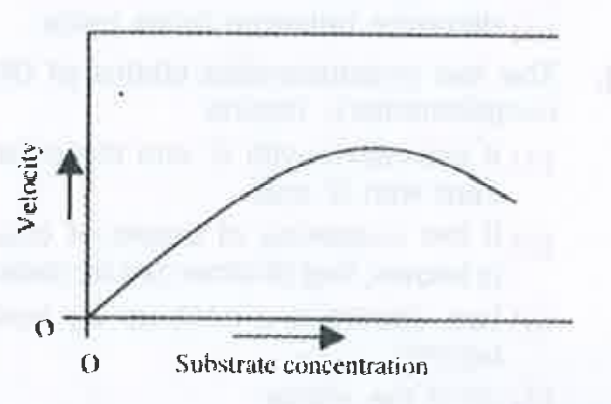A: Coenzymes are usually proteins
R:The term feedback refers to the effect of enzyme concentration on its rate of reaction.
If both As and R are correct and R is correct explanation of As
If both As and R are correct but R is not correct explanation of As
If As is correct, R is wrong
If both As and R are wrong.
The correct Answer is:d
To analyze the assertion and reason provided in the question, we will evaluate each statement step by step.
Step 1: Evaluate the Assertion
- Assertion: "Coenzymes are usually proteins."
- Coenzymes are indeed important for enzyme function, but they are not proteins themselves. Instead, they are organic molecules that often derive from vitamins (e.g., B vitamins). They assist enzymes in catalyzing reactions but do not have a protein structure. Therefore, this assertion is false.
Step 2: Evaluate the Reason
- Reason: "The term feedback refers to the effect of enzyme concentration on its rate of reaction."
- The term "feedback" in biochemistry typically refers to feedback inhibition, where the end product of a metabolic pathway inhibits an earlier step in the pathway. It does not specifically refer to the effect of enzyme concentration on the rate of reaction. Instead, the rate of reaction is influenced by enzyme concentration, but feedback is more about the regulation of enzyme activity based on product levels. Thus, this reason is also false.
Step 3: Conclusion
- Both the assertion and the reason are false. Therefore, the correct answer to the question is that both statements are incorrect.
Final Answer:
Both the assertion and reason are false.
---
- Assertion: "Coenzymes are usually proteins."
- Coenzymes are indeed important for enzyme function, but they are not proteins themselves. Instead, they are organic molecules that often derive from vitamins (e.g., B vitamins). They assist enzymes in catalyzing reactions but do not have a protein structure. Therefore, this assertion is false.
- Reason: "The term feedback refers to the effect of enzyme concentration on its rate of reaction."
- The term "feedback" in biochemistry typically refers to feedback inhibition, where the end product of a metabolic pathway inhibits an earlier step in the pathway. It does not specifically refer to the effect of enzyme concentration on the rate of reaction. Instead, the rate of reaction is influenced by enzyme concentration, but feedback is more about the regulation of enzyme activity based on product levels. Thus, this reason is also false.
- Both the assertion and the reason are false. Therefore, the correct answer to the question is that both statements are incorrect.
Both the assertion and reason are false.
Topper's Solved these Questions
- ENVIRONMENTAL ISSUESBOOK - DINESH PUBLICATION ENGLISHCHAPTER - ENVIRONMENTAL ISSUESEXERCISE - Model test paper-1
100 Videos
- ENVIRONMENTAL ISSUESBOOK - DINESH PUBLICATION ENGLISHCHAPTER - ENVIRONMENTAL ISSUESEXERCISE - Model test paper-2
100 Videos
- ENVIRONMENTAL ISSUESBOOK - DINESH PUBLICATION ENGLISHCHAPTER - ENVIRONMENTAL ISSUESEXERCISE - Brain teasers-X
145 Videos
- ECHINODERMATABOOK - DINESH PUBLICATION ENGLISHCHAPTER - ECHINODERMATAEXERCISE - REVISION QUESTIONS
65 Videos
- EVIDENCES OF EVOLUTIONBOOK - DINESH PUBLICATION ENGLISHCHAPTER - EVIDENCES OF EVOLUTIONEXERCISE - CHECK YOUR GRASP
19 Videos
Similar Questions
Discuss the effect of concentration and temperature on reaction rates.
View SolutionDiscuss the effect of temperature on the rate of a reaction.
View SolutionWhat is the effect of catalyst on the rate of reaction ?
View SolutionWhat is the effect of catalyst on the rate of reaction ?
View SolutionWhat is the effect of catalyst on the rate of reaction ?
View SolutionEnzymes enhance the rate of reaction by
View SolutionWhat is the effect of an enzyme in an enzyme-catalysed reaction?
View SolutionEnzymes increase rate of chemical reaction by
View SolutionFor a 1st order reaction if concentration is doubled then rate of reaction becomes
View SolutionWhat does the graph indicate ?
The graph given below shows the effect of substrate concentration on the rate of reaction of the enzyme green- gram-phos-phatase.

View Solution
